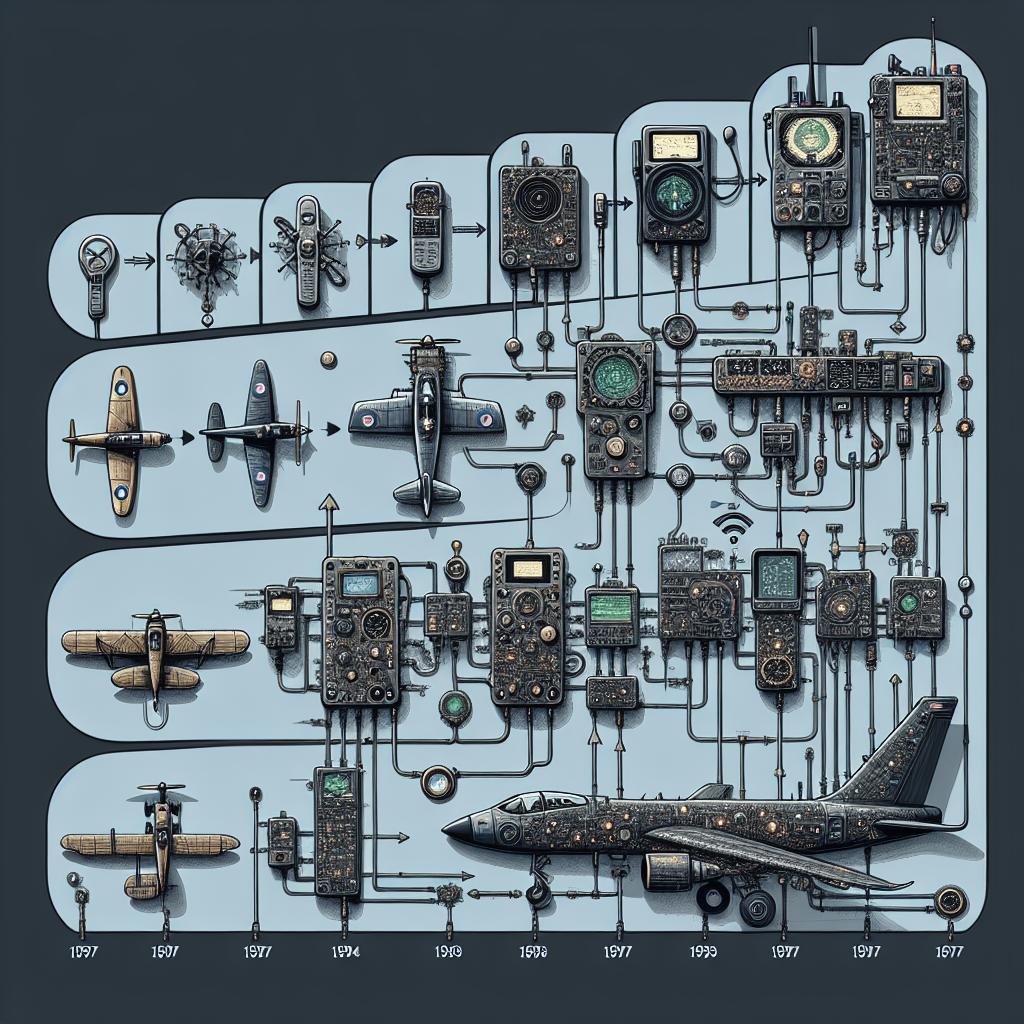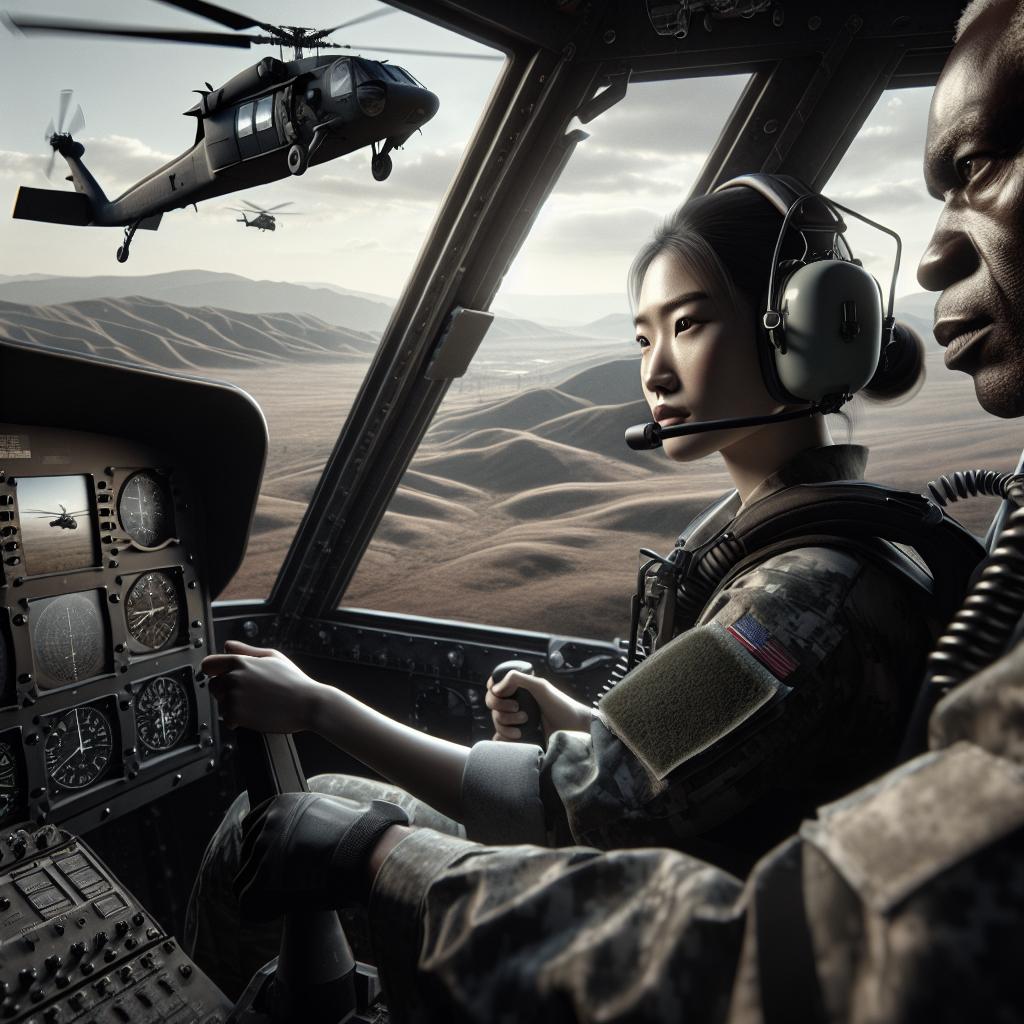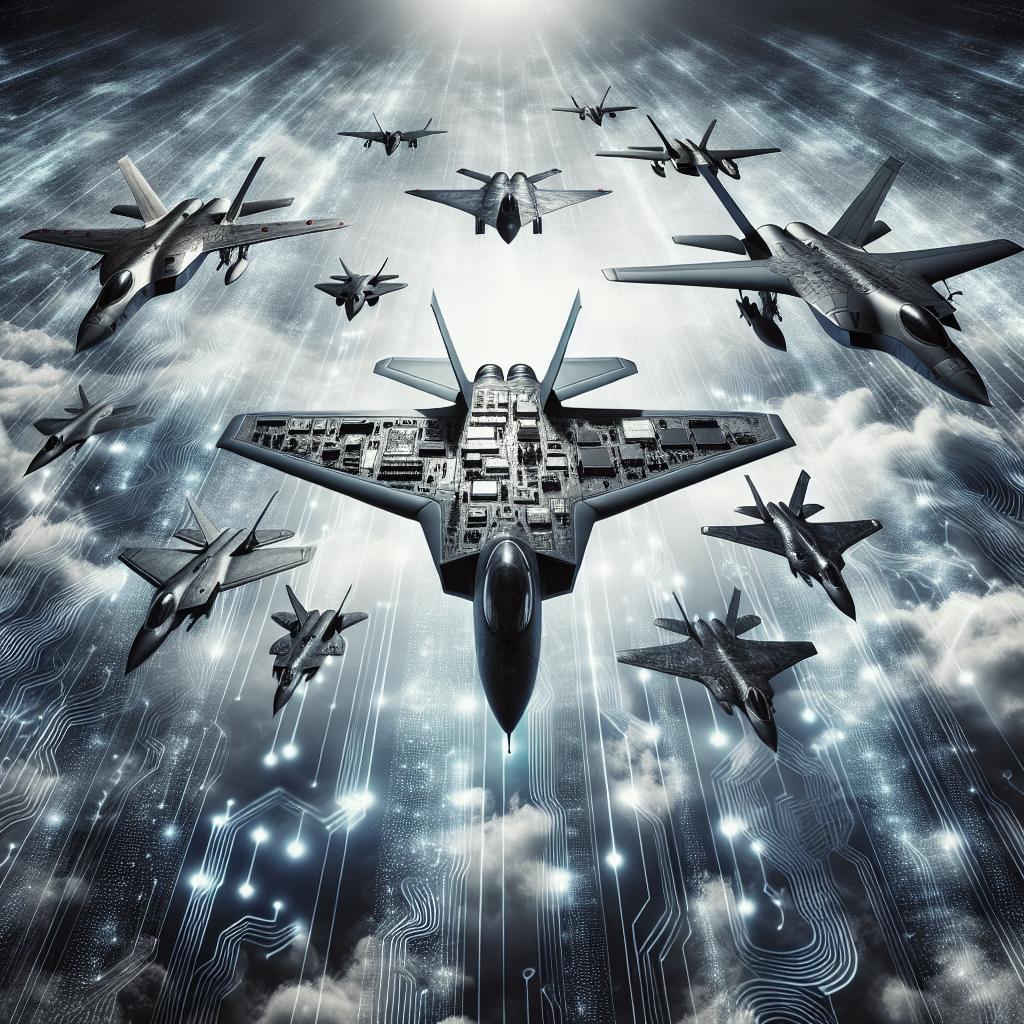“`html
The world of military aviation has seen radical transformations since the first aircraft took to the skies in the early 20th century. Technological advancements, particularly in avionics—the electronic systems used on aircraft—have significantly enhanced aircraft performance, mission efficiency, and pilot safety. This blog post delves into this evolution, examining critical facets like passenger support and safety, the transition to turbine-powered helicopters, and the impact of various avionics systems. By understanding these developments, we not only appreciate past innovations but also foresee future trends in military aviation technology.
Avionics, Passenger Support, and Safety
The Early Years: Analog Systems
In its nascent stages, avionics in military aircraft relied heavily on analog systems. These early systems provided basic functionalities like navigation, communication, and rudimentary flight control. During World War I and II, radio communication became a pivotal advancement, enabling better coordination and mission execution.
Analog systems, while groundbreaking at the time, were prone to inaccuracies and required significant manual operation. Pilots had to be adept at interpreting readings and making swift calculations, adding to their already high cognitive load.
Transition to Digital Avionics
Between the 1960s and 1980s, digital technology began replacing analog systems. This marked a significant leap forward, as digital avionics offered enhanced precision and reliability. The introduction of microprocessors and integrated circuits made these systems more compact and capable.
Digital avionics simplified many pilot tasks, automating processes like navigation and flight planning. Systems like the Global Positioning System (GPS) revolutionized navigation, enabling pinpoint accuracy and safer operations even in adverse conditions.
Flight Management Systems (FMS)
Modern military aircraft are equipped with sophisticated Flight Management Systems (FMS). These integrate multiple subsystems, including navigation, performance, and crew planning, into a centralized platform. FMS can automatically manage flight paths, optimizing routes for fuel efficiency and mission success.
These systems significantly reduce pilot workload and improve situational awareness. They allow for more complex mission parameters and can adapt in real time, proving invaluable in dynamic combat scenarios.
Enhanced Vision Systems (EVS)
Enhanced Vision Systems (EVS) are another groundbreaking development in military avionics. These systems utilize infrared sensors and other technologies to provide pilots with improved visibility in low-light or adverse weather conditions. The data is typically displayed on a Head-Up Display (HUD), allowing pilots to keep their eyes forward while receiving crucial information.
EVS has proven particularly beneficial in night operations and search-and-rescue missions. It enhances pilot safety by providing a clearer view of the terrain, obstacles, and other aircraft, hence reducing the risk of mid-air collisions and other hazards.
Communication Systems
Modern communication systems have drastically improved since the days of early radio. Secure and reliable communication is crucial in military operations, and today’s systems offer encrypted, high-bandwidth communication channels that are resistant to jamming and interception.
With the advent of satellite communication, military aircraft can now maintain contact with command centers and other units, even in remote or hostile environments. This ensures better coordination and real-time decision-making capabilities.
Turbine-Powered Helicopters
Pioneering Designs
The introduction of turbine engines revolutionized helicopter design and performance. In the 1950s, the turbine-powered Bell UH-1 Iroquois, famously known as the “Huey,” became the first standard military helicopter. Its turbine engine provided more power, higher altitudes, and better reliability compared to its piston-engine predecessors.
These early turbine helicopters demonstrated remarkable versatility, performing various roles from troop transportation to medical evacuation, proving the immense value of rotary-wing aircraft in military operations.
Tactical Mobility and Flexibility
Turbine-powered helicopters provided unparalleled tactical mobility for military operations. They could support rapid deployment of troops, equipment, and supplies to otherwise inaccessible locations, significantly boosting operational effectiveness.
As they evolved, helicopters like the AH-64 Apache incorporated advanced avionics that enabled them to perform highly specialized missions such as close air support, anti-tank operations, and reconnaissance, making them indispensable assets in modern military strategy.
Advanced Cockpit Avionics
Modern turbine-powered helicopters feature glass cockpits, where traditional analog gauges are replaced with multifunctional digital displays. These cockpits offer pilots a wealth of information in an easily interpretable format, enhancing situational awareness and mission planning.
Advanced avionics in these helicopters include synthetic vision systems, terrain awareness and warning systems, and integrated sensor suites, ensuring that pilots can operate effectively in complex environments.
Weapons Systems Integration
One of the standout features of modern military helicopters is their capability to integrate advanced weapons systems. These systems can include guided missiles, rockets, machine guns, and advanced targeting systems.
Weapons systems integration is vital for close air support and other combat roles. Avionics play a crucial role in aiming, targeting, and launching these weapons, ensuring precision and reducing collateral damage.
Autonomous and Unmanned Capabilities
Recent advancements have introduced the possibility of autonomous and unmanned helicopter operations. Case in point is the development of the K-Max helicopter, which has demonstrated cargo delivery capabilities without a pilot on board.
Autonomous systems use sophisticated avionics to navigate, avoid obstacles, and perform missions autonomously. This not only reduces risks to human pilots but also opens up new mission profiles, including hazardous area operations and extended endurance flights.
Survivability Enhancements
Modern military helicopters are equipped with survivability enhancements such as advanced armor, electronic warfare systems, and countermeasures. These features are critical in hostile environments where helicopters are vulnerable to ground fire and missile threats.
Avionics systems play a crucial role in monitoring threats and deploying countermeasures like flares and chaff to evade enemy attacks. These systems enhance the likelihood of mission success and the return of aircraft and crew.
Network-Centric Warfare
In the context of network-centric warfare, avionics in helicopters facilitate seamless integration with other military assets, creating a cohesive operational environment. This network connectivity enables data-sharing, situational awareness, and coordinated engagements.
Helicopters equipped with advanced communication suites and data links can exchange real-time information with ground forces, command centers, and other aircraft, enhancing mission coordination and adaptability.
Future Trends in Helicopter Avionics
The future of helicopter avionics will likely focus on further advancements in autonomy, artificial intelligence, and machine learning. These technologies can enable more sophisticated decision-support systems and autonomous mission execution.
Additionally, ongoing research into electric propulsion and hybrid systems may transform the next generation of military helicopters, offering quieter and more sustainable flight options.
Future Prospects
As we look ahead, the evolution of avionics in military aircraft shows no signs of slowing down. Emerging technologies such as Artificial Intelligence (AI), Machine Learning (ML), and electric propulsion are set to redefine what’s possible in military aviation. With these advancements, future military aircraft will likely be more efficient, safer, and capable of executing increasingly complex missions.
| Category | Key Developments |
|---|---|
| Early Avionics | Basic analog systems, radio communication |
| Digital Avionics | Microprocessors, GPS integration |
| Flight Management Systems | Centralized platform for navigation and performance |
| Enhanced Vision Systems | Infrared sensors, Heads-Up Display (HUD) |
| Communication Systems | Encrypted, satellite communication |
| Turbine Helicopters | More power, reliability, higher altitudes |
| Advanced Cockpit Avionics | Glass cockpits, synthetic vision, integrated sensors |
| Weapons Systems Integration | Guided missiles, rockets, machine guns |
| Autonomous Capabilities | Unmanned operations, cargo delivery |
| Survivability Enhancements | Advanced armor, electronic warfare, countermeasures |
| Network-Centric Warfare | Data-sharing, coordinated engagement |
| Future Trends | AI, ML, electric propulsion, hybrid systems |
“`


